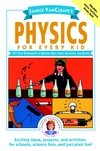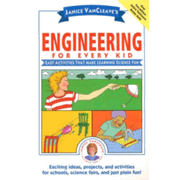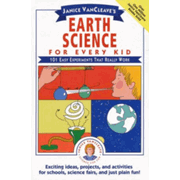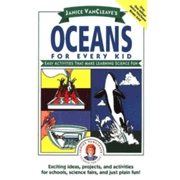Janice VanCleave’s science experiment books are very popular among homeschoolers. I will describe one book from the series, Physics for Every Kid, 101 Easy Experiments in Motion, Heat, Light, Machines, and Sound, to give you an example of how the books are designed.
Experiments range from extremely easy to slightly involved, but none require fancy equipment. The most complicated activities are things like building a wheel and axle contraption out of pencils, a spool, and string. So the cost for doing experiments and hassle of finding what you need is minimal.
Experiments are designed for children ages 8 to 12 and have been child-tested. Each experiment lists the purpose, materials needed, step-by-step instructions, results (what should happen if all goes well), and an explanation. Everything is very straightforward and easy to understand. One criticism I have is that this book lacks the “wonder quotient” we find in books such as The Backyard Scientist that prompt kids with “wondering why” questions before they begin.
A valuable asset of this book is its organization. We can easily select experiments to go along with whatever topics we are studying because they are divided into categories: electricity, magnets, buoyancy, gravity, balance, flight, simple machines, inertia, motion, light, heat, and sound. Also--unlike most experiment books for children--it has an index that helps us connect experiments with particular concepts. Other science titles in the “For Every Kid” series are Astronomy, Biology, Chemistry, Constellations, Dinosaurs, Earth Science, Food and Nutrition, The Human Body, and Oceans.














